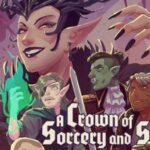Lora O’Brien’s “A Practical Guide To Irish Spirituality: Sli an Dhraoi” (Wolfpack Publishers, 2012) offers a unique, experiential approach to connecting with Irish spirituality. More than just a book, it’s a workbook designed to guide you on a personal journey. This guide delves into the heart of Irish traditions, from its ancient roots to its contemporary expressions, offering exercises and pathworkings to deepen your understanding and experience. This review explores why this book remains a valuable resource for anyone seeking a deeper connection to Irish spirituality.
This isn’t a book you simply read; it’s a book you live. O’Brien emphasizes the importance of active participation, encouraging journaling and introspection from the very beginning. The introduction poses thought-provoking questions, prompting you to consider your expectations and intentions for embarking on this spiritual journey. She is clear: the more you invest, the more you’ll gain.
The writing style is informal and conversational, creating a sense of familiarity and connection. While some might find the energetic and enthusiastic tone (“Deep breaths… and we’re off.”) unconventional for a nonfiction book, it adds a unique charm and fosters a sense of anticipation. This approach makes the material accessible and encourages engagement.
The book’s structure is based on the threefold cosmology found in the Táin Bó Cúailnge (The Cattle Raid of Cooley): land, sea, and sky. This framework provides a comprehensive exploration of Irish spirituality.
The Realm of Land: Ancestry, Sacred Sites, and Rhythms
The first section delves into the realm of land, exploring ancestry, sacred sites, and the rhythms and cycles of nature. The chapter on ancestry offers practical guidance on tracing your roots, emphasizing the tangible relationship the Irish have with the dead and the customs surrounding death, both ancient and contemporary. While some examples focus on Irish ancestry, the underlying principles are applicable to anyone seeking to connect with their heritage. O’Brien seamlessly integrates ancient Pagan traditions with more recent Catholic influences, presenting them as part of a continuous cultural and spiritual landscape. She provides concrete suggestions for honoring ancestors, fostering a sense of connection to the past.
The chapter on sacred sites offers a wealth of information and advice. It also includes a section that highlights the potential for desecration of sacred sites through careless or disrespectful behavior, reminding readers of the importance of mindful interaction.
The section on rhythms and cycles focuses on the ancient festivals, including the fire festivals and solar festivals. O’Brien provides details on the solar alignment of sites for these festivals. While ritual marking of the festivals is encouraged, she avoids prescribing specific words or actions, instead empowering the reader to be innovative and develop their own practices. This approach provides guidance without fostering dependence on external authority.
The Realm of Sea: The Sidhe, Deities, and the Otherworld
Moving into the realm of sea, O’Brien explores the Sidhe (the fairy folk), deities or Gods, and the Otherworld, including journeys or Imramma to the Otherworld. Rather than offering simplistic definitions, the book provides resources, anecdotes, and projects for deepening your knowledge and experience. You won’t find reductive explanations of deities; instead, the focus is on facilitating personal encounters and understanding. The reader is empowered to forge their own relationship with these entities.
The Realm of Sky: Magical Craft, Literature, and Priesthood and Community
The final realm, sky or air, encompasses magical craft, literature, and priesthood and community. The chapter on magical craft offers an overview of magical belief and practice in Ireland. The literature section touches on major sources of Irish mythology, as well as poetry and Breton law around trees and ogham. The final chapter addresses life cycles and how they are marked within a community. It explores the question of priesthood, emphasizing the importance of community context for anyone claiming such a title and highlighting the responsibilities that come with it. O’Brien also addresses coming of age, gender questions, and the transition of death.
Pathworkings: Inner Journeys
Throughout the book, O’Brien incorporates pathworkings, which are inner journeys through images that allow for an inner experience of the subject being explored. These pathworkings offer a meditative approach, providing structure while allowing for individual freedom. They offer a valuable balance to the external work of questions, journaling, and research.
In conclusion, “A Practical Guide to Irish Spirituality” is more than just a book; it’s a guide to a personal spiritual journey. It’s a resource that encourages active participation, introspection, and a deep connection to Irish traditions. Whether you’re a seasoned practitioner or just beginning to explore Irish spirituality, this book offers valuable tools and insights to help you find your path. It encourages readers to ask questions and embrace the unfolding of their unique journey. This book provides a solid foundation for a deeply personal spirituality rooted in experience.

